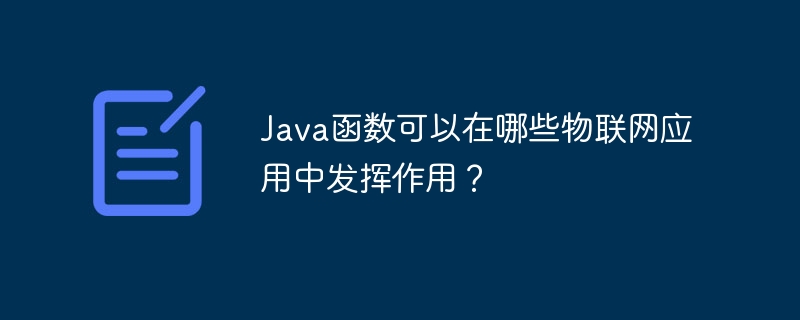java 函数在物联网应用中扮演着关键角色,尤其适用于:数据处理和分析设备管理事件触发和响应并支持边缘计算、设备到设备通信和数据可视化等其他场景。

Java 函数在物联网应用中的角色
Java 因其跨平台性和广泛的库而成为物联网 (IoT) 开发的理想选择。Java 函数特别适合以下物联网应用场景:
数据处理和分析
立即学习“Java免费学习笔记(深入)”;
设备管理
事件触发和响应
示例实战
以下是一个使用 Java 函数进行设备管理的示例:
import com.google.cloud.functions.BackgroundFunction;
import com.google.cloud.functions.Context;
public class UpdateDeviceFirmware implements BackgroundFunction<PubSubMessage> {
@Override
public void accept(PubSubMessage message, Context context) {
// 解析 Pub/Sub 消息中的设备信息
Device device = parseDevice(message.getData());
// 通过设备连接库更新固件
updateFirmware(device);
}
// 解析设备信息的方法
private Device parseDevice(byte[] data) {...}
// 更新固件的方法
private void updateFirmware(Device device) {...}
}其他应用场景
除了上述场景之外,Java 函数还可以用于以下物联网应用:
总的来说,Java 函数在其强大的处理能力、跨平台性和与 IoT 平台的集成方面,为物联网应用提供了强大的工具。
以上就是Java函数可以在哪些物联网应用中发挥作用?的详细内容,更多请关注php中文网其它相关文章!

java怎么学习?java怎么入门?java在哪学?java怎么学才快?不用担心,这里为大家提供了java速学教程(入门到精通),有需要的小伙伴保存下载就能学习啦!

Copyright 2014-2025 https://www.php.cn/ All Rights Reserved | php.cn | 湘ICP备2023035733号